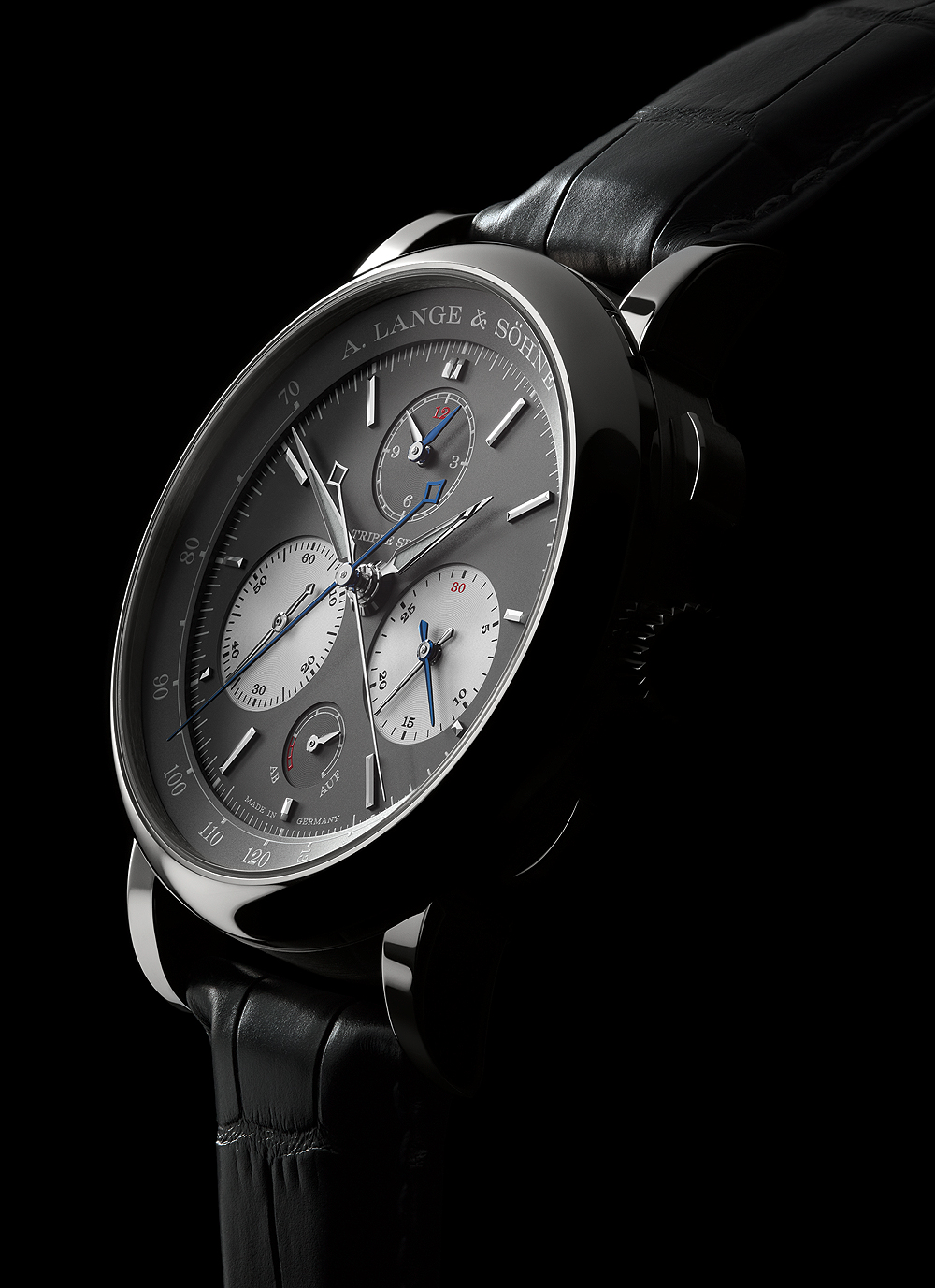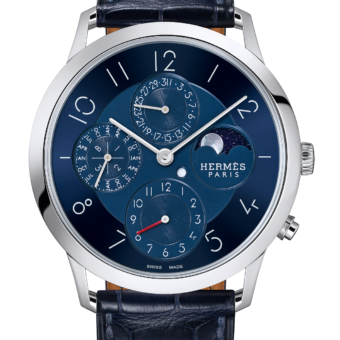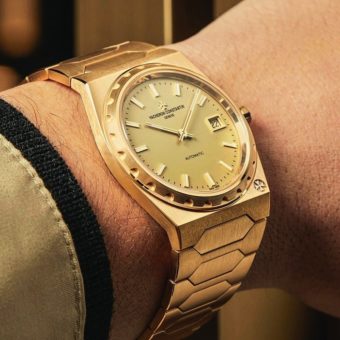The SIHH watch salon, which kicks off today, always offers some surprises, but also some things that can be counted on like (one should pardon the expression) clockwork: the weather will be cold, the traffic from the Palexpo to downtown Geneva will be awful, there will be much Champagne and little sleep for the assembled media guests, and A. Lange & Söhne will wow said media with at least one breathtakingly complicated timepiece. The Glashütte-based brand delivered again this year with the introduction of the Triple Split, the world’s first mechanical split-seconds chronograph that can perform multi-hour comparative time measurements.
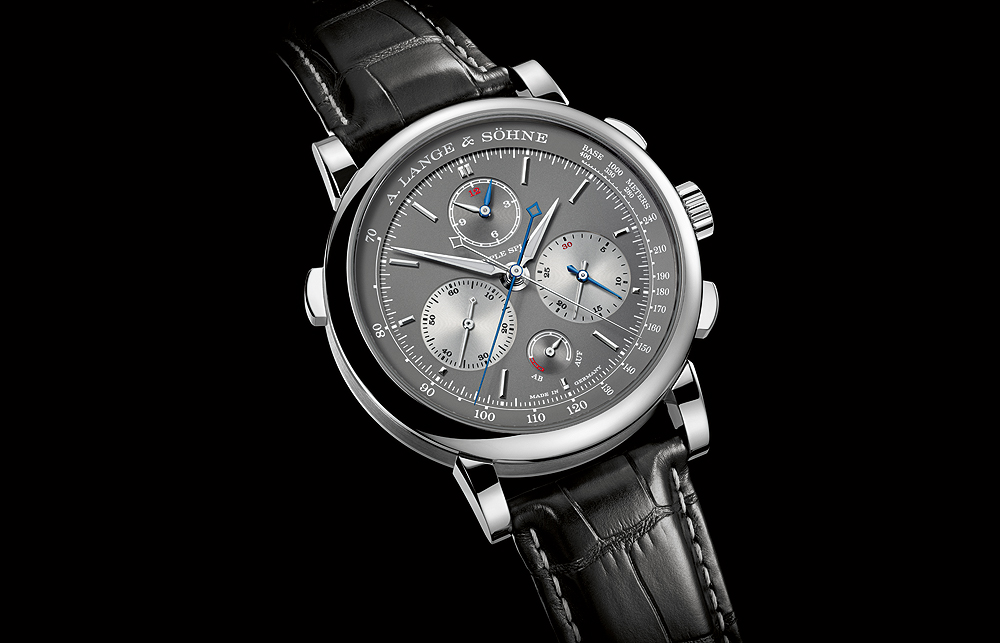
The watch — whose ability to measure both additive and comparative times up to an astounding 12 hours is achieved by additional rattrapante hands on both the minutes and hours-totalizing subdials — represents the next step up in stopwatch complexity from Lange’s Double Split model, introduced back in 2004. That timepiece could make comparative measurements with an aggregate duration of 30 minutes — already an impressive technical feat, which this new watch multiplies by a factor of 24 with its precisely jumping rattrapante minutes counter and a continuous rattrapante hour counter. One might ask, how would this type of timing be useful or applicable to real life? As Lange’s press release points out, it allows Formula 1 fans to time consecutive laps, Tour de France fans to time legs of a marathon, and pilots to record the outbound and return legs of consecutive long-haul flights. Timing the durations of multi-hour events, like individual Ironman disciplines, is also a possibility.
Here’s how it works: in its switched-off mode, the chronograph’s hand pairs – sweep seconds, minute- and hour-counter hands – are superposed. When the chronograph is activated with a press of the upper pusher above the crown, all these hands start running simultaneously until the rattrapante pusher (on the opposite side of the case) is pressed to freeze intermediate time measurements. At this point, the three blued-steel hands stop to display lap times while the seconds hand and the minute- and hour-counter hands continue to run and measure the total time. Pressing the rattrapante pusher a second time causes the three stopped hands to catch up and synchronize with the still-running, still-time-measuring hands.
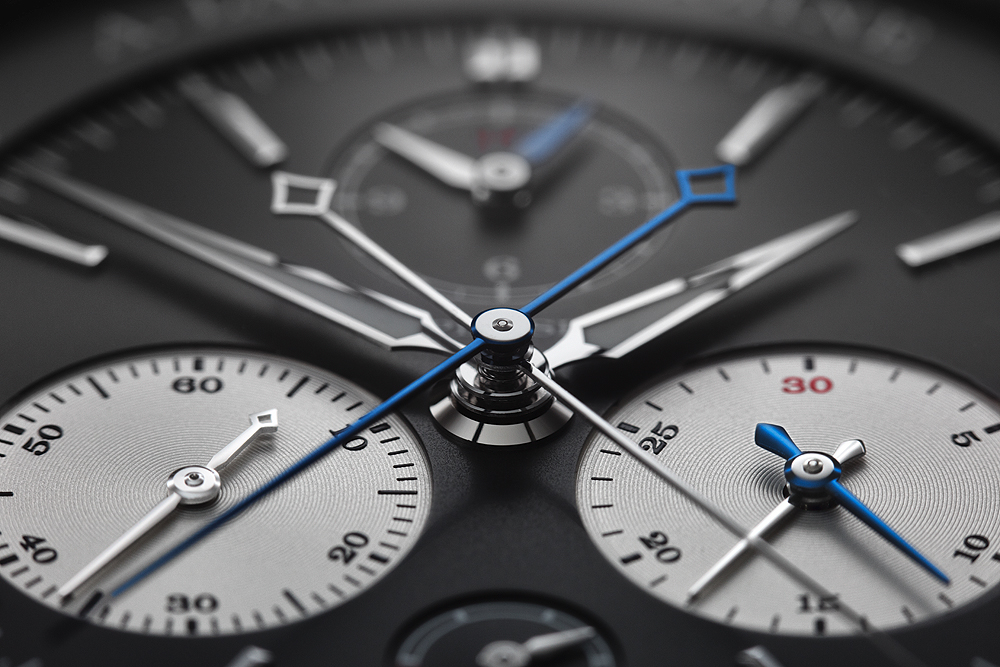
Limited to 100 pieces and housed in an 18k white gold case measuring 43.2 mm in diameter, the Triple Split is also equipped with a flyback function, one that also uses all three hand pairs. This means that the chronograph can be reset and instantly restarted, even while a measurement is in progress, by pressing the lower chronograph pusher. In addition to the chronograph subdials and the running seconds subdial bewteen 8 and 9 o’clock, the solid silver, gray-toned dial features, at 6 o’clock, a power-reserve indicator in Lange’s hallmark “Auf/Ab” (Up/Down) style, display the status of the watch’s 55-hour reserve. As a nod to clarity and legibility on this very busy but elegantly arranged dial, the three rattrapante hands in blued steel are clearly distinguishable from the other chronograph hands, which have a rhodiumed finish. The main time display hands and the baton hour markers, made of gold, are also rhodiumed, with a touch of luminous coating.

If you are not blown away enough by the Triple Split’s groundbreaking chronograph mechanism and its capabilities, it bears mentioning how difficult it was to develop, even for Lange’s seasoned watchmakers — no strangers to high complications, as witness the Tourbograph Perpetual “Pour le Merite,” last year’s SIHH headliner, to name just one example. Even a standard rattrapante mechanism requires two hands to be attached to arbors that run one inside the other. This watch’s mechanism, which triples this hand pair and needs to activate each pair collectively or separately, presents an even greater technical challenge, because it requires two seconds hands as well as two hands each for the minute and hour counters. For the watchmaker, this means multiple arbor configurations, and thus, requires extreme dexterity and patience in adjusting the endshakes.
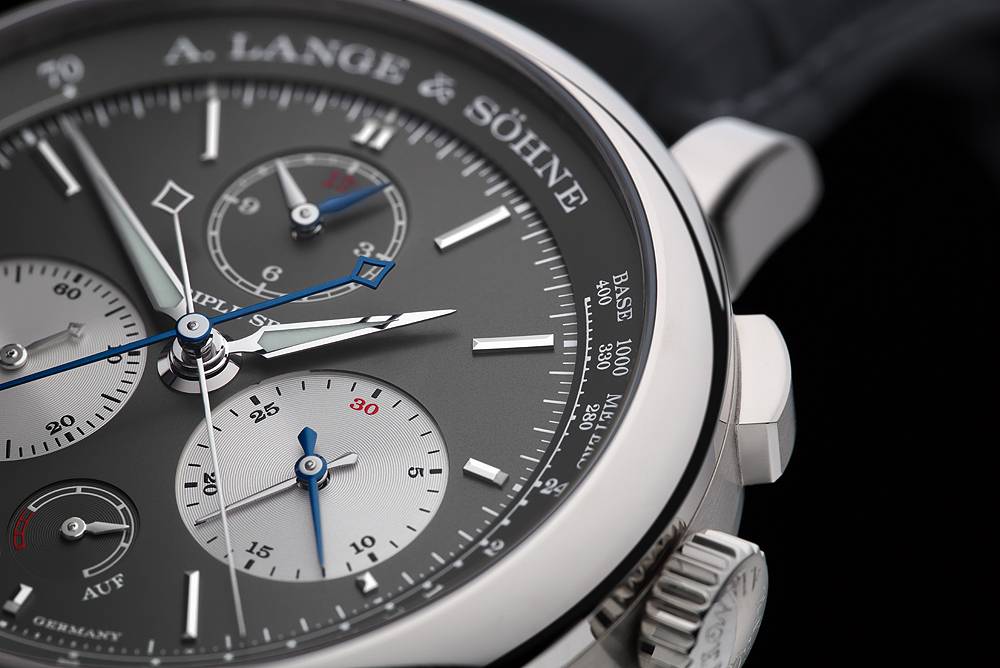
The movement — Çaliber L132, newly developed in house to power this timepiece — is designed to ensure that neither the measurement of lap times nor the motions of the precisely jumping minute counter has a negative effect on rate stability. Lange accomplishes this feat with the use of an in-house-developed, patented disengagement mechanism that prevents friction losses — and the usually unavoidable losses of amplitude that accompany them — when the rattrapante is activated.
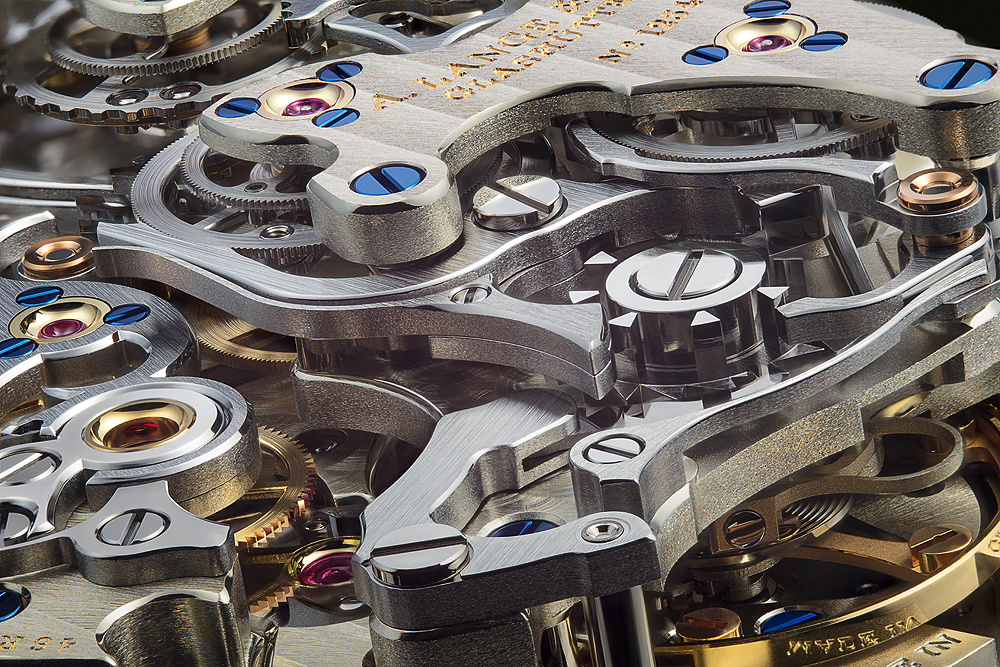
On display through the case’s sapphire caseback, the manual-winding Caliber L132.1 not only features all the hallmarks and traditional Glashütte decoration of all Lange movements, but offers the technically trained eye some notable differences from its predecessor, the Caliber L001.1 used in the Double Split. The power-reserve indicator mechanism has been shifted down to provide more display space on the dial for the rattrapante hour counter, for example. The engineers succeeded in integrating the additional components into the L001.1 movement (it’s comprised of 567 total components, including 46 jewels) without significantly increasing its size and thus necessitating a larger case.
The A. Lange & Söhne Triple Split is mounted on a hand-stitched black alligator leather strap, and carries a retail price of $147,000 — though no word yet on how many of the 100 pieces will actually make it to the United States.
